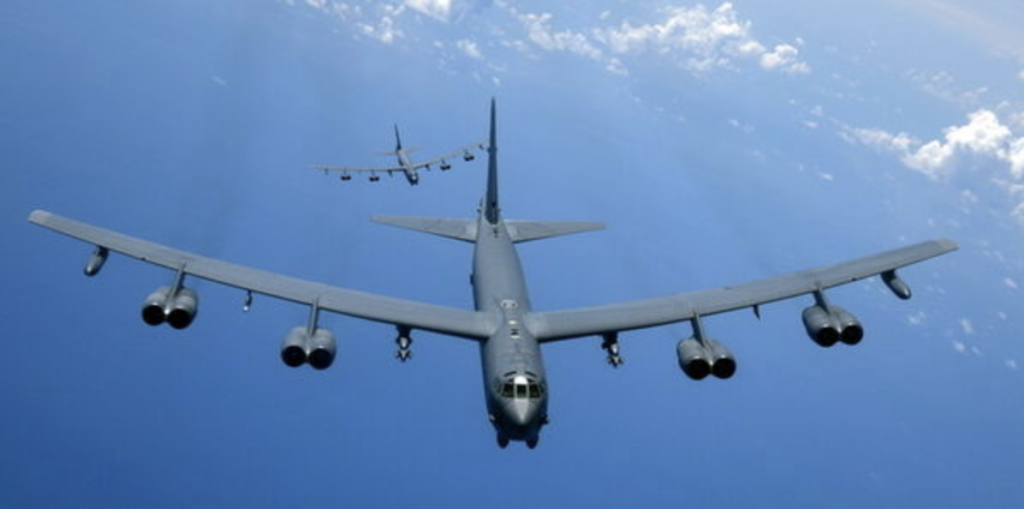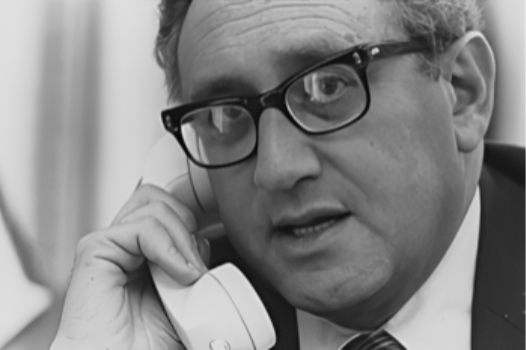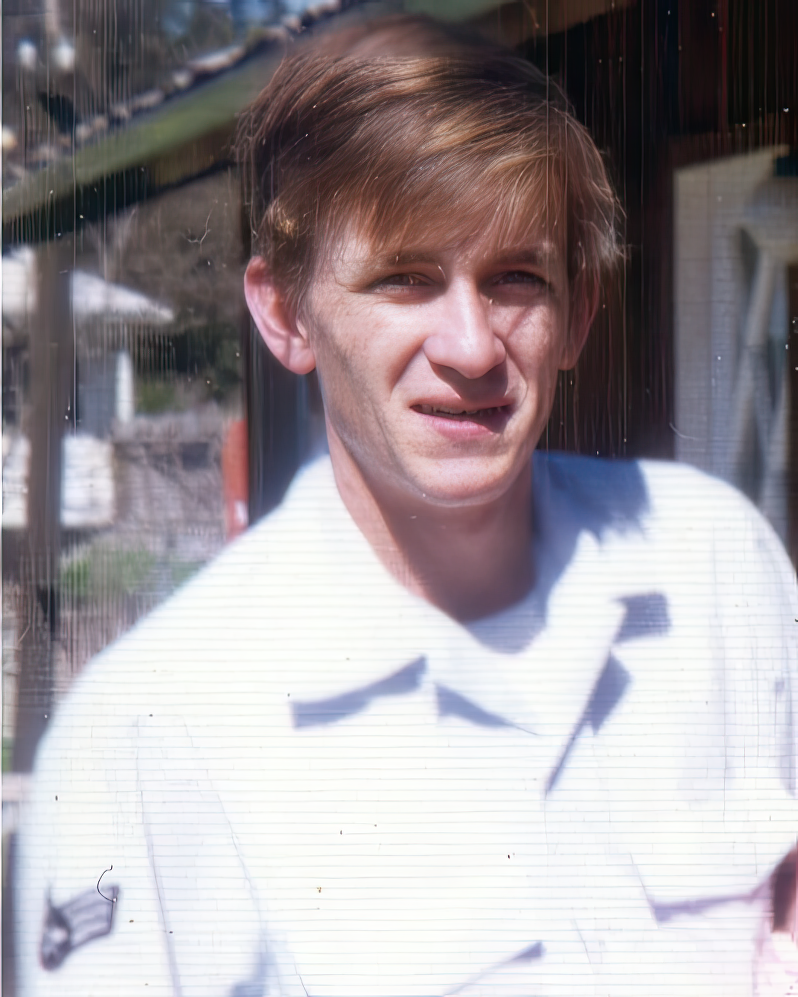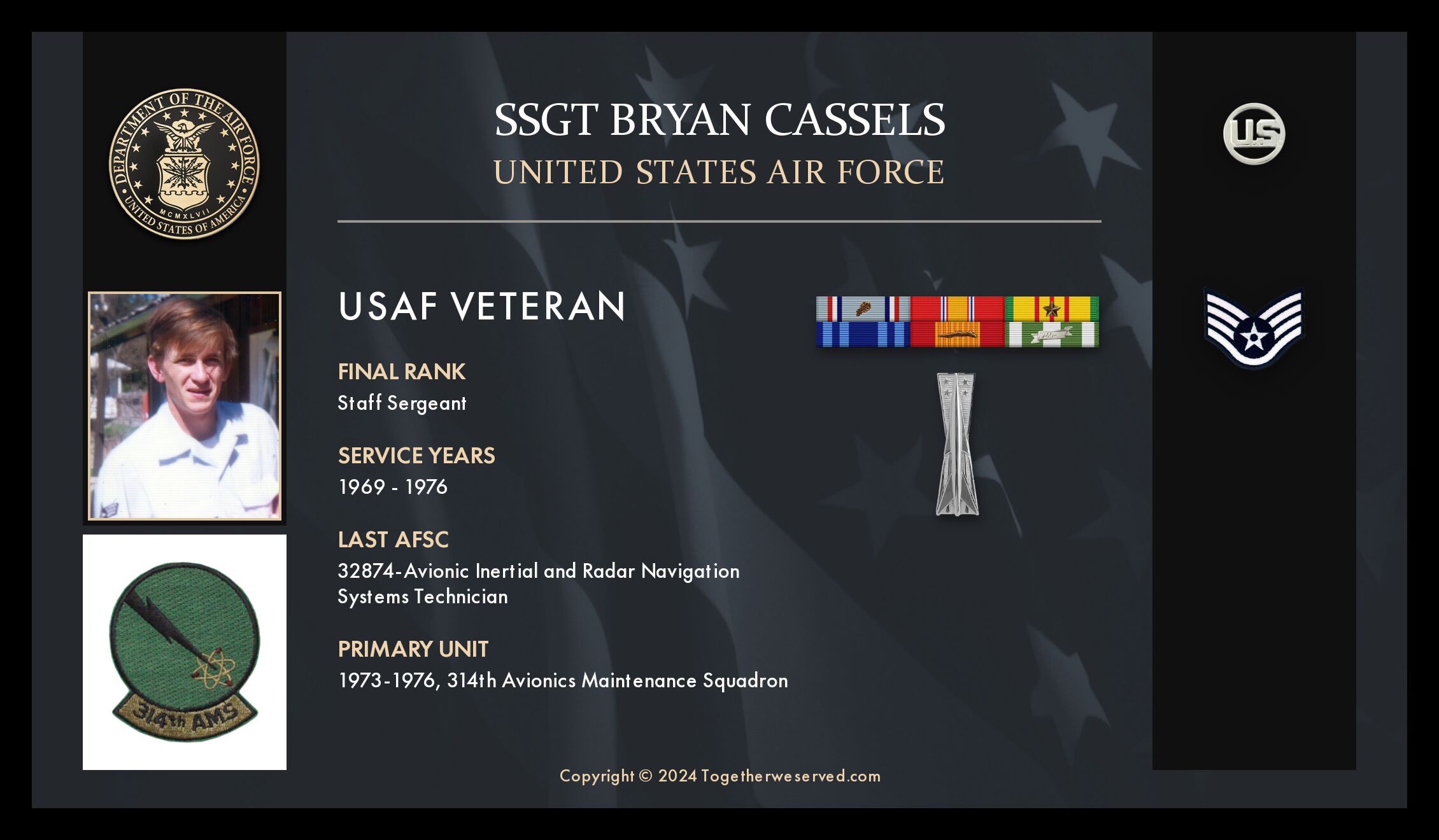PRESERVING A MILITARY LEGACY FOR FUTURE GENERATIONS
The following Reflections represents SSgt Bryan Cassels’s legacy of his military service from 1969 to 1976. If you are a Veteran, consider preserving a record of your own military service, including your memories and photographs, on Togetherweserved.com (TWS), the leading archive of living military history. The following Service Reflections is an easy-to-complete self-interview, located on your TWS Military Service Page, which enables you to remember key people and events from your military service and the impact they made on your life. Start recording your own Military Memories HERE.
Please describe who or what influenced your decision to join the Air Force.

I remember I was around eight years old. Our family was living in Los Angeles, CA. I went outside because I heard low-flying jet aircraft. It turned out to be a flight of newly commissioned B-52s on their way to March Air Force Base, and I just sat and watched them go by in awe of these beautiful aircraft. I knew then that I wanted to join the Air Force and work on those aircraft.
Whether you were in the service for several years or as a career, please describe the direction or path you took. What was your reason for leaving?

I entered the service on July 3, 1969. I was flown (with the other enlistees) to San Antonio, TX, where we were put on a bus to Lackland Air Force Base for basic training. July 4 was on Friday, so we spent the whole weekend in the one set of civilian clothes we brought. Graduated basic on August 15, was put on a bus to Keesler Air Force Base, MS. Spent the first night in an old WWII barracks, and the second night was spent in one of the classroom buildings (bomb shelter certified) to sit out Hurricane Camille. I spent a year at Keesler AFB training on Airborne Doppler Radar and Inertial Navigation systems. From Keesler, I was sent to 22nd Aircraft Maintenance Squadron at March Air Force Base, CA, in August of 1970 to work on B-52 C/D and KC-135A aircraft. In July 1971, I was transferred to the 100th Aircraft Maintenance Squadron at Davis-Monthan Air Force Base, AZ, to work on AQM-34 drones. In August of 1971, I was involved in a motorcycle accident that permanently damaged my left elbow. Since I couldn’t be sent to one of the various TDY locations, I wasn’t put on the 5-year-old that the others in the 100th AMMS enjoyed. In September of 1972, I was sent TDY to George Air Force Base, CA, for refresher training on the F-4 inertial navigation system, and in November, I got my orders to the 388th Aircraft Maintenance Squadron in Korat, Thailand. I got to Korat, and on my first day in the shop, I noticed they had AN/APN-81 test equipment and unit setup on one of the benches. I mentioned this to the shop chief; he said, “You know that system?” I said yes, I spent a year at March AFB working on tankers. He says, “You’re not working F-4s; you’re working EB-66s”. Only SAC (Strategic Air Command) trained that system.
In November of 1972, I was transferred to Little Rock Air Force Base, AR, where I spent the last 2.5 years of service. With a permanent three physical profile and a lifting restriction of 30 lbs, they weren’t enthused about my reenlisting. Even though I had all the medical recommendations to change career fields, I was not allowed to change from Doppler Radar, which I could no longer work on due to the medical restrictions.
Did you encounter a situation during your military service when you believed there was a possibility you might not survive? Please describe what happened and what was the outcome.

On August 8, 1971 (Sunday), I had only been at Davis-Monthan Air Force Base, AZ, for three weeks; I and a buddy went out to the Desert Museum outside of town on our motorcycles. On our way back, mind you, this is a twisty, dippy, sand-covered road, and I lost track of my buddy behind me. So at a rise, I looked in the rear-view mirror and did not see him. I thought, “At the next rise, if I do not see him, I will turn around and ensure he is OK.” I get to the top of the next rise, look in my rear-view mirror, and see the double yellow line pass under my tires. I looked up to see the biggest Chevy grill I had ever seen in my life about 35 feet away at the bottom of the dip. As far as I know, I removed his outside rear-view mirror with my left arm; this resulted in the radius being dislocated and the ulna being broken and dislocated, both ending up in my biceps. The left side of the motorcycle had been sheared. I was lucky I was sent over the handlebars, or my leg would have joined the other parts that had been sheared off.
Net result – 2 surgeries and a permanent three physical profile with a lifting restriction of 30 pounds.
Of all your duty stations or assignments, which one do you have fondest memories of and why? Which one was your least favorite?

Davis-Monthan Air Force Base was my favorite duty station, mostly because the people I was working with within the 100th Aircraft Maintenance Squadron were all top-rated technicians, really the best of the best. The opportunity to work on absolutely state-of-the-art electronics was absolutely wonderful and pretty much unheard of in avionics at that time. The second best was Korat Royal Thai Air Force Base, just because of the opportunity to learn and study a completely different culture from what I had grown up with.
For the same reason, my least favorite places are Keesler Air Force Base, MS, and Little Rock Air Force Base, AR. I could not stand the local population in either place. The day after arriving at Keesler AFB, here comes Hurricane Camille: “Welcome to Mississippi.”
From your entire military service, describe any memories you still reflect back on to this day.

There are so many memories I still reflect on. Every base I was at has a special memory in one form or another. Most of my memories are absolutely wonderful, like gems in a pouch that you get to take out one at a time, pat them, admire their beauty, and then put them back for another day.
- Lackland Air Force Base – Confidence Course and rifle range
- Keesler Air Force Base – Hurricane Camille and aftermath
- March Air Force Base – Working on alert B-52s the Sunday before the IG arrived, ensuring they were all up to snuff. I enjoyed debriefing and questioning the navigators when there was an issue with their Doppler. There was one B-52 crew that was actually the best at what they did. They even had business cards. They would come into debriefing, and every single one of them had a complaint about one or more of their systems; the problem descriptions were such that each person there knew they were going to spend hours, if not days, figuring out where the problem was, then they’d say, “But we didn’t write it up; the crew behind us needs the practice.” One time, there was a problem with the Doppler radar; by the time the navigator told me everything he had done to troubleshoot the system, I knew which component on the aircraft needed to be replaced and what was needed to fix the faulty unit. He had done all the troubleshooting for me. One day, the same crew had been flying bombing exercises over Denver, CO and ran into severe thunderstorms over the Rockies. The aircraft took a lightning strike on its tail that removed over 50% of the tail; the rudder ended up V-shaped (going backward). All of the radio antennas were in the tail except for the LF radio, which was a wire stretching from the back of the cockpit to the base of the tail, so that was their only communication. Since the aircraft was a B-52C, the gunner was in the tail with the 50-cal machine guns. The aircrew didn’t know if he was alive or dead until they landed; he said, “I don’t know what happened, but every light on my panels lit up and went out, and I was touching nothing until we landed. I could hear the rest of the crew calling me, but I wasn’t touching that metal push-to-talk button.” The aircraft was deemed unflyable, and Boeing engineers and technicians were brought in to bring it back up to speed. I spent more than six months in the hangar being repaired. I believe the aircrew was awarded the Distinguished Flying Cross for being able to bring the aircraft home so heavily damaged.
- Davis-Monthan Air Force Base – The whole time stationed there
- George Air Force Base – Discovering my wife was pregnant
- Korat Royal Thai Air Force Base – I made friends with one of the local bands and, through them, was introduced to the English class at the local university.
- Little Rock Air Force Base – Birth of second child

Rhein-Main Airbase (TDY) – ‘Twas the Sunday before Christmas, and news was that Secretary of State Henry Kissinger was due to arrive the next day to spend the holidays with his family. At noon, I went to the NCO club and joined up with some of the others I was TDY with to order lunch. I ordered a steak and an iced tea. I got my iced tea about the time I was being paged. I went to the house phone, and its maintenance dispatch told me a tanker was coming in with a broken Doppler radar. I responded, “OK, what do you want me to do? I’m here with C-130s, which have a completely different Doppler system. There’s no test equipment to service a tanker’s Doppler system.” I returned to my table and was paged again a couple of minutes later.
Go to the phone. This time, it’s the Chief Dispatcher (SMSGT), and he repeats that the tanker is coming in with a broken Doppler, which needs fixing. I explained, “A tanker has an AN/APN-81 Doppler radar, and I’m here with C-130s that have an AN/APN-147 Doppler system. I have no test equipment and no spare parts for the tanker.” He said, “OK, I’ll let them know.” I went back to the table, and another couple of minutes passed, and I was paged again. This time, it was the Deputy Commander for Maintenance (Colonel). I went through the same conversation I had with the Chief of Dispatch, with one addition: the Colonel said, “It sounds like you know what you’re talking about.” I responded, “Yes, Sir, I’ve worked both systems and am fairly familiar with them.”
After hanging up, I went back to the table (still no steak), and a couple of minutes later, I was paged again. This time, it was a conference call between me, the Deputy Commander for Maintenance, the Deputy Commander of Operations (Colonel), and the Captain of the aircraft. They asked me if I could try to fix it. I said, “I’ll do my best with what I’ve got, but I don’t have replacement parts.” They asked, “Where do we get replacement parts?” I said, “Where’s the nearest SAC base?” “Torrejon, Spain.” They said, “OK, I’ll do my best.” I hung up, told the people at the table I had a steak coming if someone wanted it, and left.
I went back to the barracks to change into fatigues and ran across two of my technicians. I asked them, “You want to work on a completely different airplane? There’s a tanker coming in with a broken Doppler that needs fixing.” They both jumped at this opportunity. We went to the shop and waited for this aircraft to come in. There was a huge window in the shop that had a great view of the approaching end of the runway.
I saw the aircraft coming in and immediately ran to the phone to job control. I told the dispatcher, “That is NOT a tanker; that is a VC-135, and it can have whatever nav system it wants, including an F-4 inertial set.” My cohorts and I caught a ride out to the aircraft parked in front of the terminal. The loadmaster and crew chief of the aircraft greeted us and directed me to the Navigator station. I could tell by the instruments that it had the AN/APN-147 system like we had on the C-130s. It turned out the antenna wasn’t switching like it should. I changed the antenna and checked the system; it was now working fine. Secretary of State Henry Kissinger seemed to be in-country a day early. We finished up and went on our way.
What professional achievements are you most proud of from your military career?

When I was at Davis-Monthan AFB, we got a new type of transponder for the drones: no manuals and one piece of test equipment. I was a junior in the shop, and everybody was gathered around this new piece of equipment, trying to figure out how to make it work. They all decided to go to the break room and discuss it over coffee, leaving me alone in the shop. Being the technophile I am, I had to go over and look. The instructions for using the test equipment were on the lid of the unit, but they were not very clear. I tinkered with it, trying to follow the instructions, and finally got it working. I left it running, went back to the desk, and waited for everyone else to come back.
They came, saw it was running, and said, “All right, Cassels, what did you do?” I said, “I got it running.” The shop chief spun the dials, flipped the switches, and told me, “All right! Do it again!” And I did. My reward: “You get to write the Technical Order for this.”
Of all the medals, awards, formal presentations, qualification badges you received, or other memorabilia, which one is the most meaningful to you and why?

There are two:
- The Missile Man Badge. Because the 100th AMMS was the only place someone in my AFSC (Airborne Doppler Radar) could be awarded that badge.
- The Vietnam Service Medal, being there when and where I was, and helping the overall mission was more important to me than I realized at the time.
Which individual(s) from your time in the military stand out as having the most positive impact on you and why?

TSGT Dennis Langlais from March AFB. He took me aside one day and told me to do everything as if I were signing my name to it. Because, in reality, I was. I took that to heart and changed myself and my outlook to having no grey areas. Everything was either right or wrong, and if it wasn’t 100% right, it was wrong. I changed to wanting to be the absolute best I could be at anything I did.
List the names of old friends you served with, at which locations, and recount what you remember most about them. Indicate those you are already in touch with and those you would like to make contact with.

The only person from my service career who I would consider a friend is SSGT Emmett Williams, my immediate supervisor at Davis-Monthan AFB. I do not make friends easily or keep in touch once I have moved on, but Emmett and I got along great and were always teasing each other.
Sometime during my time there, the 100th AMMS had a dinner bash, and Emmett came up to me with his wife. I was there with my wife, and he said, “Bryan, would you please explain to my wife what happened?”. I knew precisely what he was referring to. So I looked at his wife and explained: “You see, Emmett was at the desk answering the phone when my wife called, and while I was standing there, he told her that I had been sent home 2 hours earlier. So, needless to say, I got in trouble when I got home that day.
So the next time you called, I got my revenge by loudly announcing, ‘Emmett, it is for you, and it does not sound like the last one.’ His wife turned to him, punched him in the shoulder, and told him, “Serves you right!” We spent the rest of the evening in each other’s company, and it was a very nice evening.
Can you recount a particular incident from your service that may or may not have been funny at the time but still makes you laugh?

When I entered the service, it was discovered I had 4 impacted wisdom teeth and an impacted 2nd molar on the lower left jaw, which meant its opposing tooth also needed removal. Fast forward to Keesler AFB, MS. I got scheduled for oral surgery to remove these 6 teeth and was admitted to the hospital the night before since surgery was scheduled at 0600 in the morning. I got to the clinic, checked in, and they took me straight into the surgery room. The oral surgeon would start the IV, and the assistant was busy counting all the pointy sharp tools in the tray on my left. Mind you, in 1969, an IV consisted of a hollow needle attached to a nylon tube that was not attached to anything. I had really good arteries and veins in those days, so when the doctor poked the artery, he could clearly see that he actually went through the other side. So he is looking at this, seeing he hit the target square, but no blood is coming out. After a moment, he realizes what happened and pulls back the needle until blood starts flowing. The precise process of getting the needle properly positioned and tied down begins.
Meanwhile, my blood is pumping out the end of the nylon tube, which still has not been connected to anything, and the assistant is still counting and cataloging the instruments on the tray (I think he was trying for the best 4 of 7 by this time). Now, the nylon tube has a natural bend in it, so it is swinging about in an arc driven by the force of my blood shooting out the end. The doctor is still tying down my arm, and it is not until a stream of blood hits the assistant in the temple that someone realizes they need to plug the tube into something, anything. About the time the doctor has fastened my arm down to his satisfaction, the assistant catches the tube; they plug it into a jar of saline. I breathe a sigh of relief as the blood flows back into my arm. Now, both the doctor and the assistant are streaked in blood, and they decide to go and change their garb to clean stuff. The oral surgery office was built like a squared-off horseshoe, with the exam/surgery room on one leg, the offices on the other, and the waiting room on the stretch in between. So they had to go out the door (which they left open) to go back to the office to change. People in the waiting room are able to see the exam/surgery room, and there is blood on the ceiling, blood on the floor, and blood on the counters. I am unsure if they ever figured out why everyone in the waiting room decided they needed to be elsewhere.
What profession did you follow after your military service, and what are you doing now? If you are currently serving, what is your present occupational specialty?

After leaving the service in 1976, I went to work as an electronic technician for a small company in Tucson, AZ. After almost two years with them, IBM called and wanted to do an interview. I ended up one of the first seven people hired by IBM as an Electronic Technician in Tucson for what was to become IBM Tucson. Not long after, I was transferred to Product Test to test unannounced products before they were made public to ensure this new product would meet all its specifications and requirements. When IBM announced the Personal Computer, they had an employee purchase program. I jumped on that bandwagon and ordered the highest-end computer I could get and every programming language available for it. I switched from being an electronic technician to being a programmer, primarily self-taught, but I had some great mentors at IBM. That’s how I spent the rest of my work life – writing software. I retired in 2013 and have not written a piece of software since.
What military associations are you a member of, if any? What specific benefits do you derive from your memberships?

AMVETS – American Veterans – Life Member, camaraderie with fellow veterans.
VFW – Veterans of Foreign Wars – Life Member, camaraderie with fellow veterans.
DAV – Disabled American Veterans – Life Member, camaraderie with fellow veterans, and, as CSO (Chapter Service Officer), the opportunity to help other veterans obtain earned VA benefits.
SAMS – Scottish-American Military Society – Annual Member – This organization is for Veterans and Active Duty who are of Scottish descent. It’s a great excuse to wear a kilt!
In what ways has serving in the military influenced the way you have approached your life and your career? What do you miss most about your time in the service?

I always do my very best at whatever task I’m given and go above and beyond whenever possible.
What I miss most is the camaraderie with my co-workers and the shared experiences.
Based on your own experiences, what advice would you give to those who have recently joined the Air Force?

Give every task you have your best. As my grandfather told me, “If it isn’t worth doing right, it’s not worth doing at all.” And as TSGT Dennis Langlais said: “Do everything as if you’re signing your name to it because you are.”
In what ways has togetherweserved.com helped you remember your military service and the friends you served with.

Together We Served gave me the excuse to go back and really remember those meaningful events from my military service, including dates. I even requested my military records for dates and events.
PRESERVE YOUR OWN SERVICE MEMORIES!
Boot Camp, Units, Combat Operations
Join Togetherweserved.com to Create a Legacy of Your Service
U.S. Marine Corps, U.S. Navy, U.S. Air Force, U.S. Army, U.S. Coast Guard

0 Comments